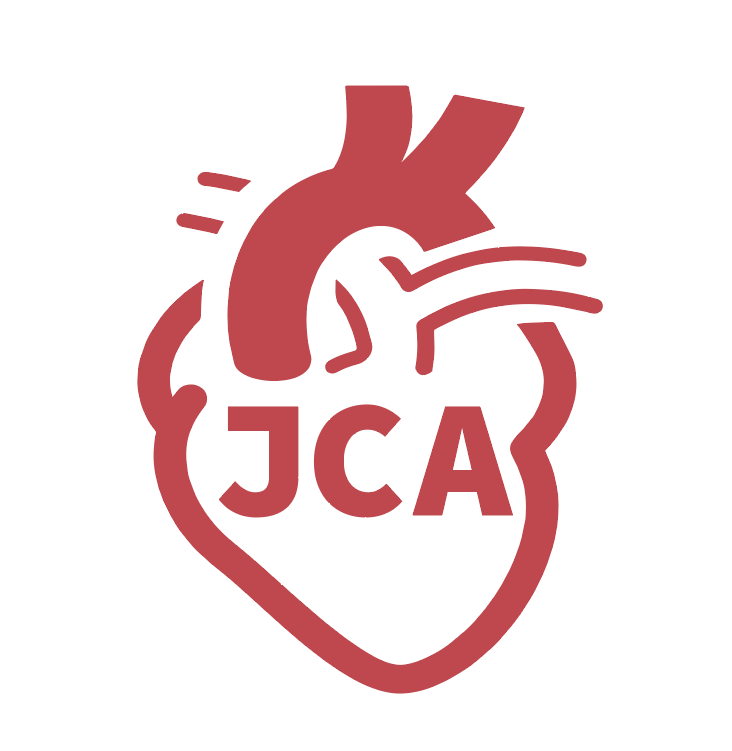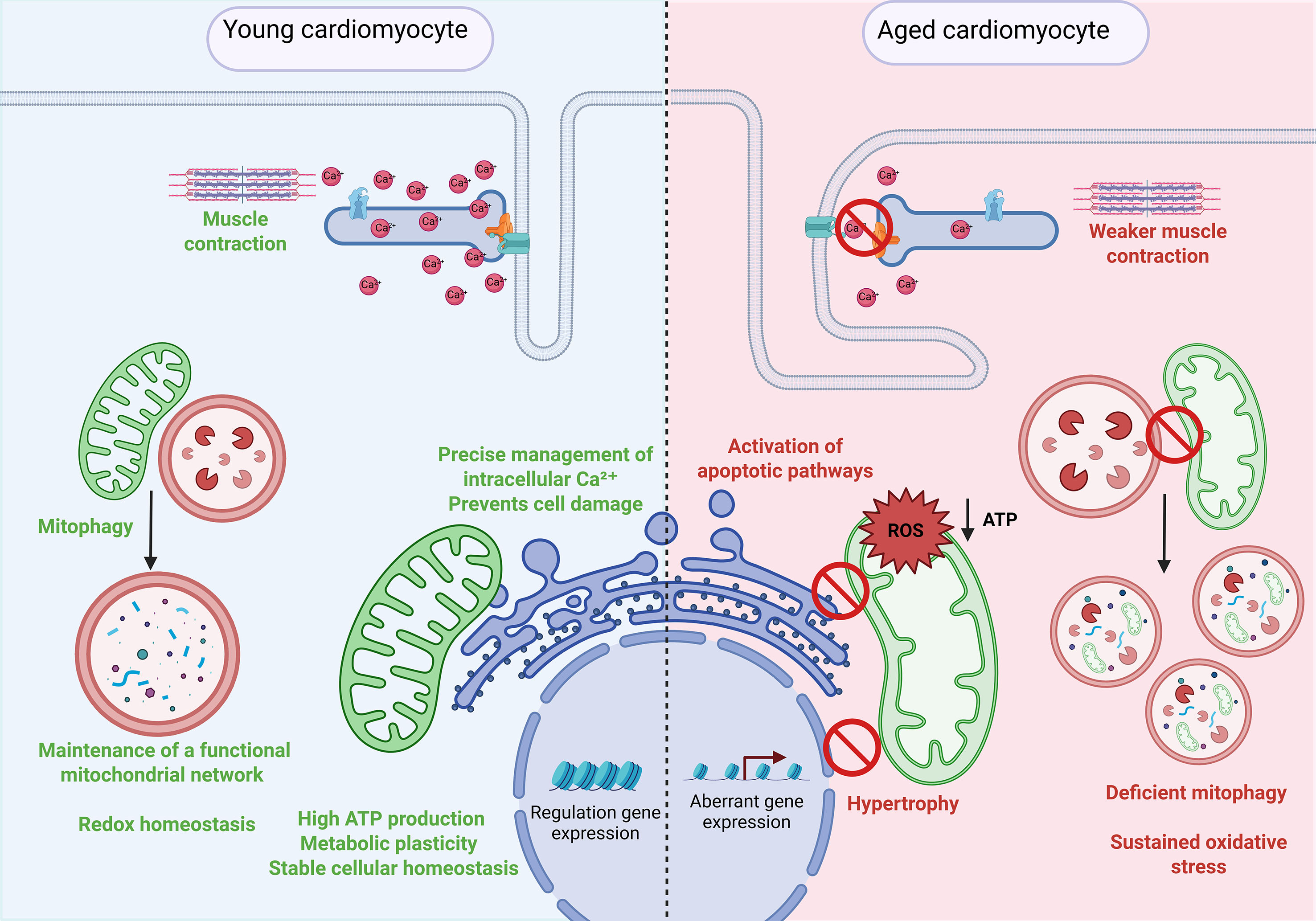fig2
Figure 2. Cellular and subcellular alterations in aged cardiomyocytes. Comparison between young (left) and aged (right) cardiomyocytes, highlighting key age-associated changes. In young cardiomyocytes, efficient Ca2+ handling, active mitophagy, and coordinated organelle communication preserve mitochondrial function, gene expression regulation, and muscle contractility. In contrast, aged cardiomyocytes exhibit impaired Ca2+ cycling, loss of ER-mitochondria contacts, disrupted mitophagy, and mitochondrial dysfunction characterized by elevated reactive oxygen species (ROS) and reduced ATP production. These alterations lead to hypertrophy, aberrant gene expression, oxidative stress, and weaker cardiac contraction, ultimately contributing to age-related cardiac dysfunction.









